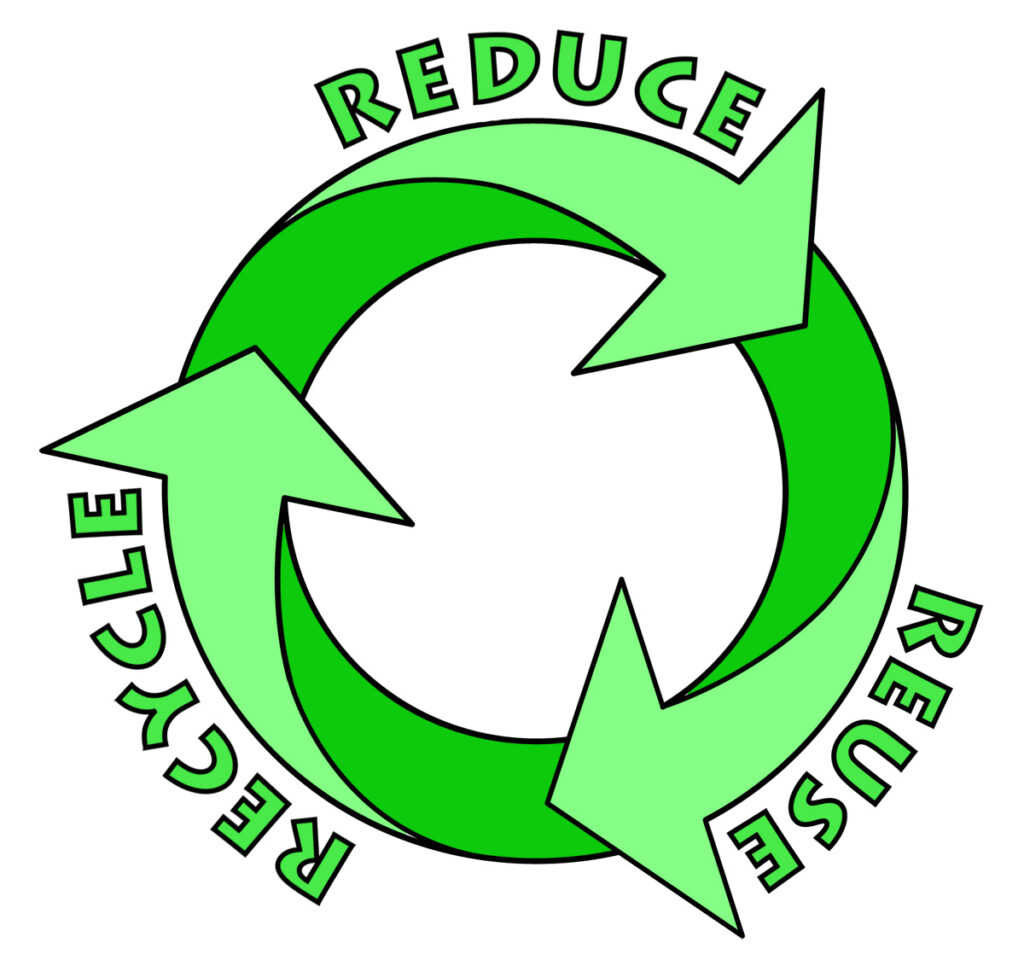In today’s world, sustainability is no longer just a trend — it’s a necessity. As climate change accelerates and resources become limited, finding practical ways to be sustainable in everyday life is crucial. You don’t need to live off the grid or make drastic sacrifices; small, consistent changes can collectively make a big impact.
This guide will explore actionable, realistic, and affordable methods you can adopt today to reduce your environmental footprint while living a balanced and fulfilling life.
Why Living Sustainably Matters
Sustainability is about fulfilling our present needs while ensuring future generations can also meet their own without depleting resources or harming the environment. It’s about protecting natural resources, reducing waste, and choosing eco-friendly options that support both the planet and our well-being.
By integrating sustainable habits into your daily routine, you can:
- Reduce pollution and greenhouse gas emissions
- Preserve natural resources
- Support ethical and eco-conscious businesses
- Save money over time
- Promote a healthier lifestyle
1. Practice Conscious Consumption
The easiest place to start is by being mindful of what you buy and how you use it.
- Buy only what you need to prevent overconsumption and waste.
- Choose quality over quantity — invest in durable items instead of fast-fashion or cheap products that break easily.
- Support sustainable brands that use ethical manufacturing processes and eco-friendly materials.
Example: Instead of buying five cheap T-shirts that last a few months, buy one organic cotton T-shirt that lasts for years.
2. Reduce, Reuse, and Recycle

We’ve all heard of the 3Rs, but applying them consistently can make a huge difference.
- Reduce: Avoid single-use plastics by carrying a reusable water bottle, coffee cup, and shopping bags. Choosing durable, reusable items over disposables is one of the easiest ways to be sustainable in everyday life, reducing waste and conserving valuable natural resources.
- Reuse: Give items a second life — glass jars can be storage containers, and old clothes can become cleaning rags. Repurposing what you already have not only saves money but also supports ways to be sustainable in everyday life through waste reduction.
- Recycle: Follow your local recycling guidelines carefully to ensure materials are processed correctly. Proper recycling keeps valuable resources in circulation, reduces landfill waste, and lowers pollution, helping communities and the environment thrive through responsible waste management practices.
3. Switch to Renewable Energy Where Possible
If your region allows, opt for renewable energy providers that use solar, wind, or hydroelectric power. Even if you can’t install solar panels, you can:
- Use LED lighting that consumes less power: Switch to energy-efficient LED bulbs that last longer, reduce electricity bills, and help conserve resources while lowering your carbon footprint over time.
- Switch off electronics when not in use: Turn off devices like TVs, computers, and chargers when unused to save electricity, reduce environmental impact, and extend the life of your electronics.
- Use smart power strips to eliminate phantom energy waste: Smart power strips automatically cut off electricity to idle devices, preventing phantom energy use and saving money while promoting eco-friendly energy habits.
4. Adopt a Sustainable Diet
The food you choose to consume plays a major role in influencing the health of our environment.
- Eat more plant-based meals — even one or two vegetarian days a week can lower your carbon footprint.
- Buy local and seasonal produce to reduce transportation emissions.
- Minimize food waste by organizing your meals in advance and storing ingredients correctly to keep them fresh for longer periods.
Tip: Compost food scraps instead of throwing them in the trash.
5. Practice Sustainable Fashion Choices
Globally, the fashion industry ranks among the top contributors to environmental pollution. To shop sustainably:
- Choose second-hand or thrift stores.
- Support brands that use organic, recycled, or eco-friendly fabrics.
- Learn clothing repair skills to extend the life of your wardrobe.
- Create paper wall hangings from recycled newspapers or old magazines to add charm to your home décor while promoting eco-friendly, budget-friendly creativity.
6. Make Your Home More Energy-Efficient
Small home improvements can lead to big sustainability gains:
- Install energy-efficient appliances: Investing in energy-efficient appliances reduces electricity consumption, lowers utility bills, and minimizes environmental impact. Look for Energy Star-rated products to ensure long-term savings and a step toward sustainable living.
- Use natural light whenever possible: Maximize daylight by opening curtains and rearranging furniture to reduce the need for artificial lighting. This simple change conserves energy, saves money, and supports eco-friendly habits in daily life.
- Add insulation to reduce heating and cooling needs: Properly insulating your home helps maintain a consistent indoor temperature, minimizing the use of heating and cooling systems, cutting energy costs, and supporting ways to be sustainable in everyday life.
7. Conserve Water
Freshwater is a limited resource, and every drop counts.
- Turn off taps while brushing your teeth: Conserving water is one of the easiest ways to be sustainable in everyday life. Turning off taps prevents unnecessary waste, saves money, and helps protect this valuable natural resource.
- Install low-flow showerheads and faucets: Low-flow fixtures significantly reduce water usage without sacrificing comfort. By making this small upgrade, households can cut utility costs, conserve freshwater supplies, and contribute to more sustainable living habits.
- Collect rainwater for gardening: Rainwater harvesting reduces dependence on municipal water systems. Stored rainwater can be used to irrigate plants, lowering water bills while promoting eco-friendly gardening practices that benefit the environment.
8. Choose Sustainable Transportation Options
Transportation is a major source of carbon emissions.
- Walk, cycle, or use public transport when possible.
- Share rides through carpooling to decrease the number of vehicles on the road, helping reduce traffic congestion and lower harmful carbon emissions.
- Consider an electric or hybrid car for lower emissions.
9. Support Local and Eco-Friendly Businesses
Your spending power can drive change. Look for companies that:
- Use sustainable packaging: Brands that prioritize sustainable packaging help reduce waste and pollution. Choosing recyclable, compostable, or reusable materials supports eco-friendly practices and is a key step in ways to be sustainable in everyday life.
- Follow ethical labor practices: Supporting companies that follow ethical labor practices ensures fair wages, safe working environments, and respect for workers’ rights, promoting social sustainability alongside environmental responsibility.
- Are transparent about their sourcing: Transparency in sourcing allows consumers to make informed choices. Brands that openly share their supply chain details encourage accountability and help customers align purchases with sustainable values.
10. Grow Your Own Food and Plants
Urban gardening is a powerful way to live sustainably.
- Grow herbs and vegetables in pots or small gardens: Growing your own herbs and vegetables in pots or small gardens reduces dependence on store-bought produce, promotes self-sufficiency, and supports ways to be sustainable in everyday life while saving money.
- Choose native plants that require less water: Native plants are adapted to local climates, requiring less water and maintenance. Planting them conserves resources, supports biodiversity, and creates a thriving garden that aligns with sustainable living principles.
- Compost organic waste to nourish your plants: Composting kitchen scraps and yard waste creates nutrient-rich soil for plants, reducing landfill waste and chemical fertilizer use while closing the loop on sustainable gardening practices.
11. Get Involved in Community Sustainability Efforts
You can multiply your impact by joining local initiatives:
- Community clean-ups: Join community clean-ups to remove litter from parks, beaches, and streets. These events improve the local environment, encourage teamwork, and promote awareness about keeping public spaces clean and safe.
- Tree planting drives: Participate in tree planting drives to fight climate change, improve air quality, and beautify communities. Trees provide shade, habitats for wildlife, and long-term environmental benefits for generations ahead.
- Local recycling programs: Support local recycling programs by sorting waste correctly, attending educational workshops, and encouraging community involvement. These initiatives reduce landfill waste and promote sustainable habits for a cleaner, greener future.
12. Educate Yourself and Others
Knowledge is the foundation of lasting change, especially when exploring ways to be sustainable in everyday life. Follow reputable sustainability blogs, listen to eco-friendly podcasts, and watch documentaries highlighting environmental issues and solutions. Learning from credible sources keeps you informed about emerging green technologies, policies, and practical tips you can apply daily. Share your knowledge with friends, family, and colleagues to spark meaningful conversations and collective action. By spreading awareness, you create a ripple effect where more people adopt eco-conscious habits, amplifying the positive environmental impact far beyond your own personal efforts.
Final Thoughts
Adopting sustainable habits doesn’t mean overhauling your entire life overnight. It’s about consistent, mindful choices that, over time, reduce your environmental footprint. Whether it’s the food you eat, the clothes you wear, or how you travel, every decision counts.
Start with one or two of these ways to be sustainable in everyday life and build from there. Your future self — and the planet — will thank you.
FAQs: Ways to Be Sustainable in Everyday Life
Begin with small steps like reducing single-use plastics, conserving water, and eating more plant-based meals.
Yes. By buying less, reusing items, and conserving resources, you can reduce expenses over time.
Not at all. Focus on progress, not perfection — even partial changes can have a big impact.



